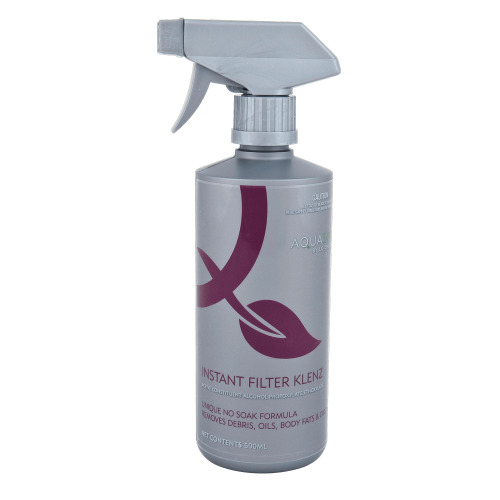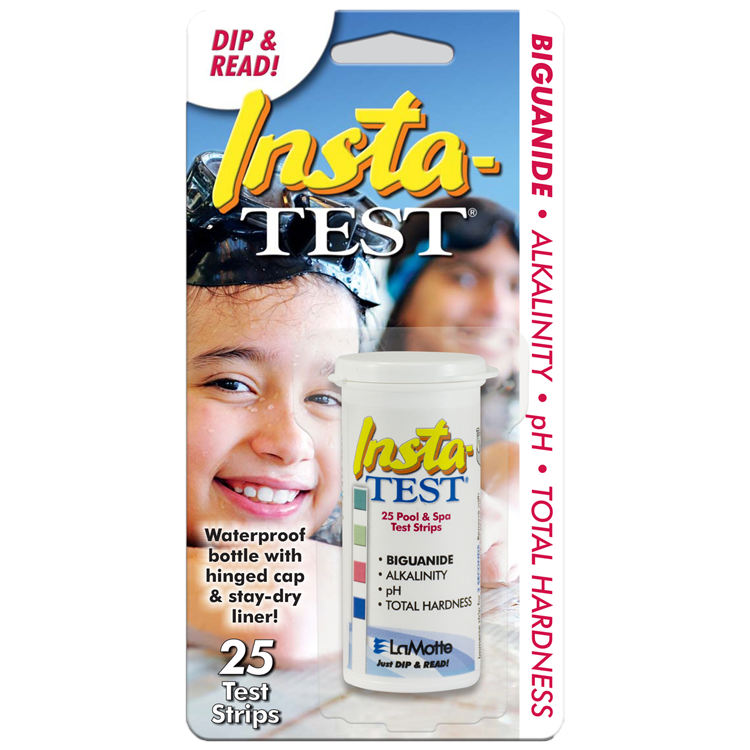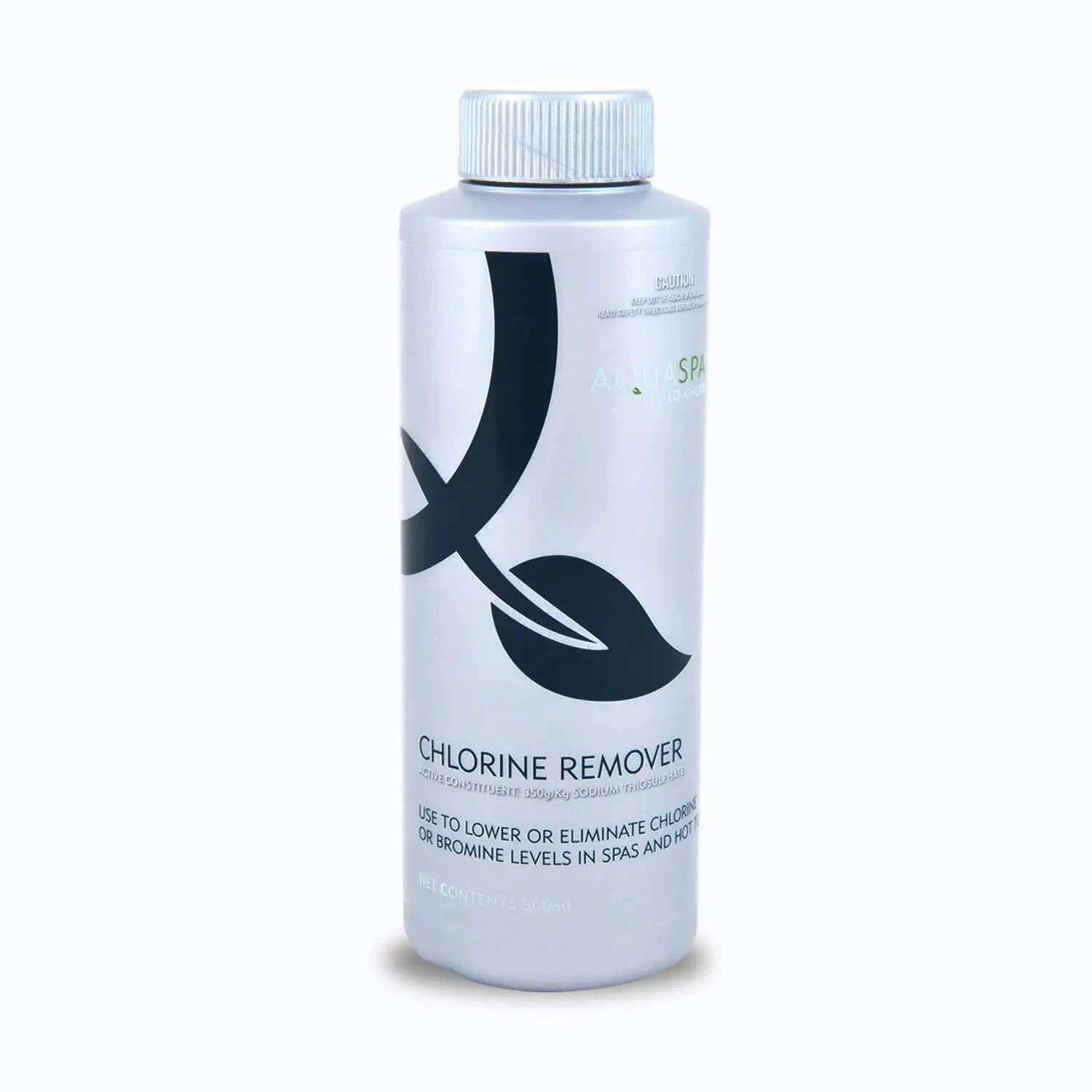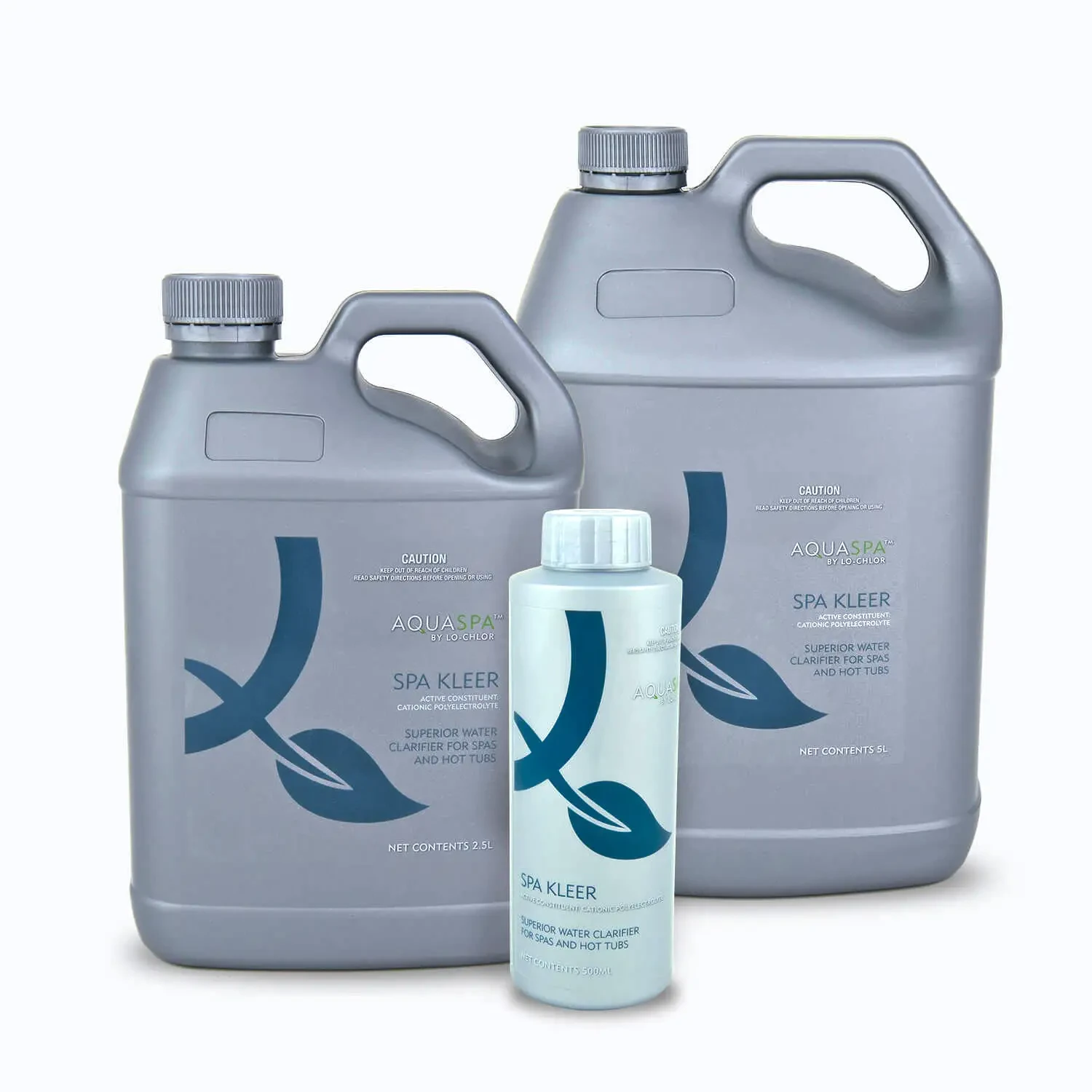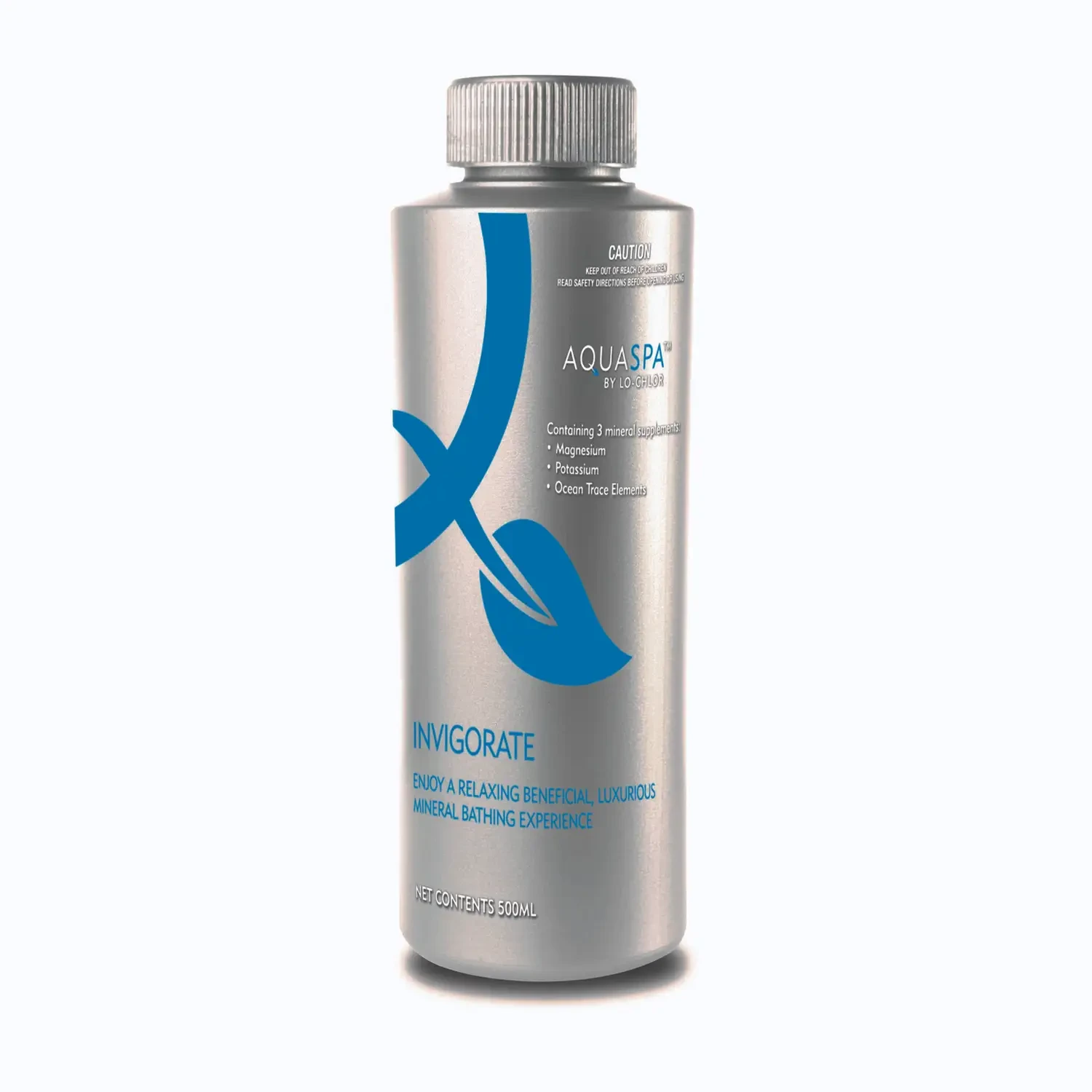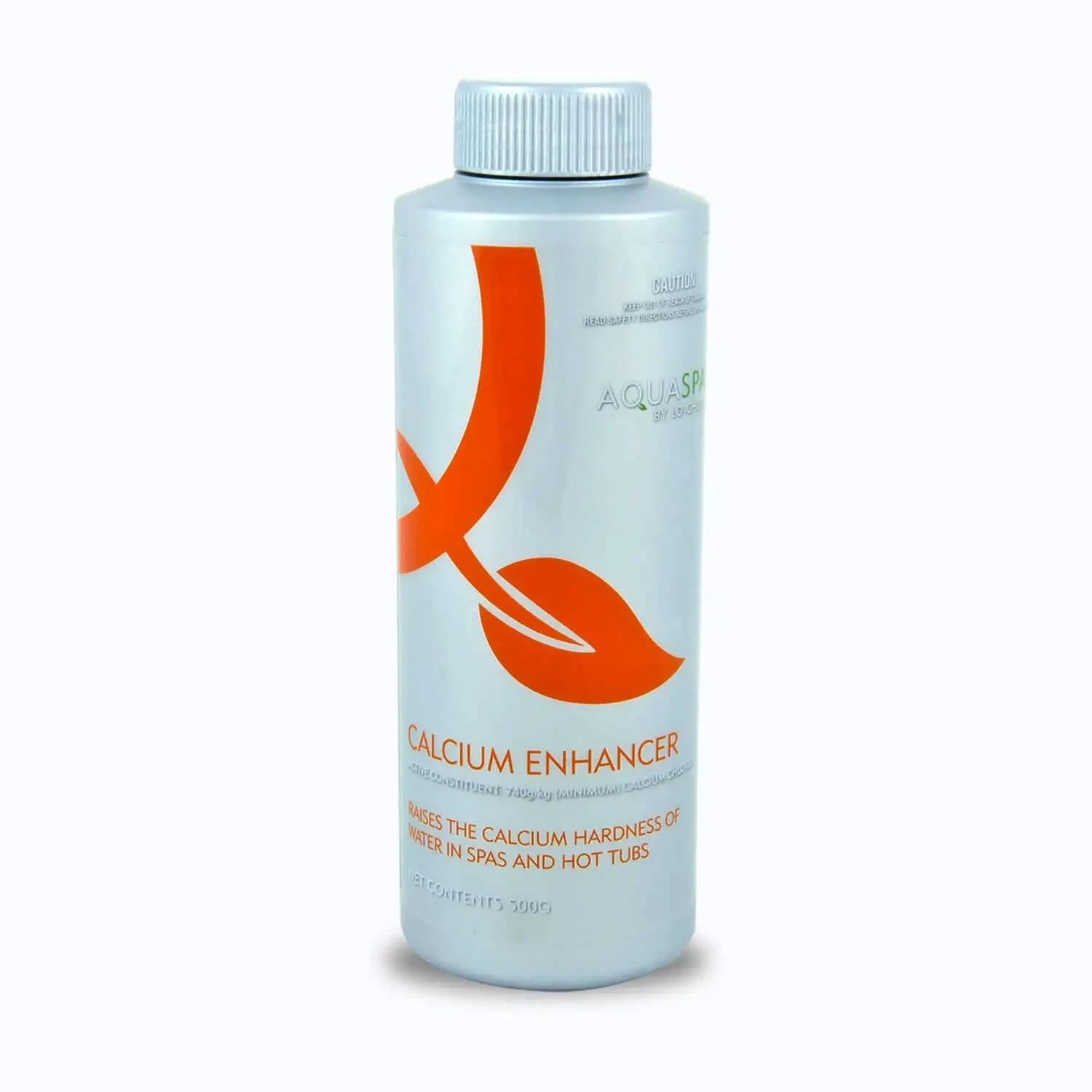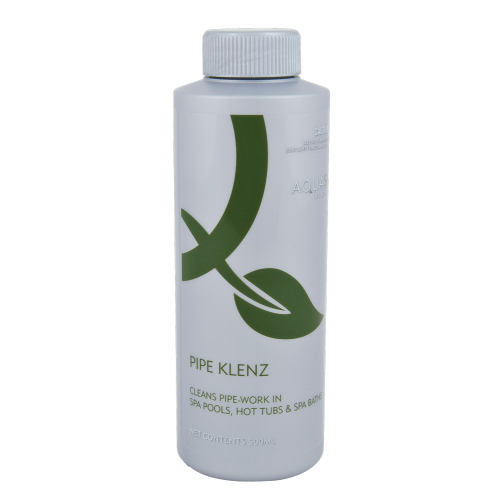Chlorine Free Spa Systems in NZ
Why AquaSpa Stands Out
Looking to enjoy your spa pool without the smell or harshness of chlorine? You're not alone. Many New Zealand spa owners are seeking chlorine-free water treatment options for a gentler, more natural soaking experience. However, it's crucial that any alternative still keeps your spa water safe and clean. Improper sanitisation can lead to harmful bacteria growth – in fact, there have even been spa-related cases of Legionnaires' disease in NZ due to inadequate water treatmentconsumer.org.nz. In this article, we’ll explore the chlorine-free spa systems available in NZ and explain why AquaSpa – a new APVMA-approved sanitiser system – is a superior choice for healthy, sparkling spa water.
A crystal-clear, inviting spa pool – achievable without using chlorine, as long as an effective sanitiser system is in place.
Why Go Chlorine-Free in Your Spa?
Chlorine and bromine have long been the standard spa and pool sanitisers because they are very effective at killing bacteria. But they come with downsides that drive some spa owners to seek alternatives. Chlorine’s strong smell, potential to irritate skin/eyes, and the need for frequent dosing and monitoring can diminish the relaxing spa experience. Bromine, while gentler in odor, shares many of chlorine’s drawbacks – it can dry out skin, cause itchy eyes, and doesn’t perform as well in very hot water. For those with chemical sensitivities (for example, asthma or eczema sufferers) or anyone who simply prefers a more "natural" water feel, going chlorine-free is an attractive option.
That said, water hygiene is paramount. Warm spa water is a perfect breeding ground for bacteria and algae if not properly sanitised. Any chlorine alternative must effectively kill pathogens and maintain a “residual” in the water – meaning it keeps working between soaks. Let’s review the common chlorine-free systems in NZ and how they measure up on this crucial requirement.
Chlorine-Free Spa Systems Available in NZ (and Their Limitations)
New Zealand consumers have a few chlorine-free spa treatment options, ranging from hi-tech gadgets to mineral and plant-based products. Most of these serve as supplements to reduce chlorine use rather than full replacements, because few can maintain a sufficient residual sanitiser in the water on their own. A recent Consumer NZ investigation found that aside from traditional chlorine/bromine, “for the rest [of the products], you’d need to add another cleaner to make the water safe”consumer.org.nz. Below is an overview of the main chlorine-free systems and why they generally cannot be used as standalone sanitisers:
-
Ozone Generators & UV Systems: Many modern spas come with an ozone injector or UV-C light unit. These devices kill
microbes on contact
as water circulates through the unit. Ozone is a powerful oxidiser, and UV light neutralises bacteria and viruses. The catch: once
water returns to the spa, there’s no residual disinfectant left.
Ozone/UV can help reduce the amount of chemical sanitiser needed, but “ozone will not replace the need for chemical sanitisers”.
You still must use a residual sanitiser in the water (just at lower levels). In short, ozone and UV are excellent secondary
systems for extra protection, but not sufficient on their own. (On the plus side, AquaSpa’s sanitiser is compatible with
ozone generatorsaquaspa.co.nz,
so you can certainly use your spa’s ozonator alongside it for an even more robust treatment.)
-
Silver and Mineral Ion Systems: These include products like silver-ion cartridges (e.g. Nature2 sticks) or liquid additives
(e.g. Simple Silver, mineral salt systems). Silver ions are released into the water to inhibit bacteria and algae. They are
low-maintenance (a mineral cartridge can last months) and have no odor. However, silver is a slow-acting sanitiser and
typically not strong enough alone for a heavily used spa. In fact, there is no NZ water quality standard guideline for
silver concentration,
and relying on silver alone would require frequent water testing to ensure safetyconsumer.org.nz.
Consumer NZ found that none of the silver-based products they reviewed were appropriate to clean the water on their ownconsumer.org.nz.
One silver system claiming to be “once a year, no other products required” (SimpleSilver) was even linked to a Legionnaires' case in 2021consumer.org.nz
– highlighting the risk of using it without an additional sanitiser. Most experts agree silver/mineral systems should be treated as supplements
to your main sanitiser.
They can help reduce chemical usage or provide backup in low-use scenarios, but manufacturers and experts often recommend using an oxidiser
or chlorine occasionally to clear the waterspaworld.co.nz.
Bottom line: mineral systems offer convenience, but lack a reliable residual – so they work best in
conjunction with a real sanitiser (and fortunately, they are compatible with AquaSpa as well).
-
Enzyme-Based Treatments: These are the so-called “natural” or “eco-friendly” spa water treatments (examples include Spa
Magic, Biologica Spa, or enzyme products like Water’s Choice). Enzyme formulations use natural enzymes to break down organic matter (like
body oils, lotions, etc.), aiming to keep water clear and reduce the workload on your sanitiser. They are typically weekly additives and
often marketed as “chemical-free” spa care. While enzymes can indeed help reduce scum and maybe lower the chlorine
demand,
by themselves they do not sanitise the water. Enzymes have “no great ability to kill living organisms,” so you
still need to add a sanitiser
(like chlorine or bromine) when using themconsumer.org.nz.
In Consumer NZ’s review, the expert explicitly said enzyme products “shouldn’t be used as a standalone product to keep your spa pool
water clean”consumer.org.nz.
If used alone, the water can quickly turn cloudy or even green with algae. In short, enzyme treatments are only a supporting
player
– they are best used alongside a sanitiser (and indeed some enzyme brands suggest occasional chlorine shocks in the fine printconsumer.org.nz).
-
Hydrogen Peroxide Systems: Hydrogen peroxide (H₂O₂) is a strong oxidiser that can kill bacteria and break down organic
contaminants. It’s sold as a liquid chlorine-free sanitiser by brands like Poppits® and others, often as part of a kit with
additives. When used in high enough concentration, hydrogen peroxide can sanitise spa water; it’s actually the primary
ingredient in baquacil/biguanide pool systems as the oxidiser. The advantage is that it’s chlorine-free and when it breaks down it just
becomes water and oxygen (no harsh byproducts). The downsides: peroxide is less stable than chlorine in a hot spa and
sunlight, so it can dissipate relatively quickly. It also can struggle with high bather loads – users report that heavy use can overwhelm a
peroxide-treated spa, leading to cloudy water that’s harder to clear. The Consumer NZ survey found the particular H₂O₂ products they
looked at did not reach the required disinfectant level at the label’s recommended doses. (The supplier of one such
product provided evidence of meeting Australian standards and being registered as an official sanitiser, but even so, an expert advised using
it with an algaecide or secondary sanitiser for safetyconsumer.org.nz.)
In practice, most peroxide-based systems still include a “weekly shock” or activator (often a non-chlorine oxidiser) to
boost effectiveness. Hydrogen peroxide is arguably one of the better chlorine alternatives available, but it requires
diligent maintenance
– you may need to test and dose more frequently, especially after spa use, to ensure the peroxide level stays effective.
-
Bromine Sanitiser: Bromine isn’t chlorine, but it is a close chemical cousin (both are halogen
sanitizers). We mention it here because some spa owners switch to bromine tablets as a “chlorine-free” solution. Bromine does have some
advantages: it’s a very effective disinfectant, and it remains stable in warm water longer than chlorine (it keeps a residual). It also has a
softer odor for some people. However, bromine shares many of chlorine’s undesirable properties – “it has a strong smell, can dry your
skin and cause itchy eyes,”
and is generally better suited to lower-temperature pools than hot spas. So while bromine is a valid alternative to chlorine (and can be
used on its own as a primary sanitiser), it isn’t a “chemical-free” system by any means. Those looking to avoid the
routine of adding halogen chemicals might not find bromine to be a satisfying solution, as it still involves managing chemical levels and
dealing with some irritation issues.
As you can see, most non-chlorine systems end up being secondary aids or partial solutions. They might reduce your chlorine use, but none (except bromine) truly replace having an active sanitiser in the water at all times. Relying solely on ozone, silver, or enzymes is risky – you’d be soaking in water that isn’t fully sanitised between treatments. The key is having a residual sanitiser in the spa water that continuously keeps bacteria at bay.
This is where AquaSpa comes in. AquaSpa is a newer chlorine-free spa sanitising system now available in NZ, and it was specifically developed to provide that missing residual sanitiser without using chlorine or bromine. Let’s delve into what AquaSpa is and how it compares.
AquaSpa – A Better Chlorine-Free Spa Sanitiser (Now in NZ)
AquaSpa is an innovative chlorine and bromine-free sanitising system for spa pools and hot tubs. It was introduced to the NZ market after the Consumer NZ review mentioned above (which is why it wasn’t in that comparison). AquaSpa’s claim to fame is that it offers a complete, stand-alone sanitiser solution – meaning you don’t need to add chlorine or any other disinfectant when using AquaSpa. It’s able to do this because its active ingredient is a proven biocide used in both pools and healthcare: Polyhexamethylene Biguanide, also known as PHMB or polyhexanide.
PHMB is a broad-spectrum antimicrobial that has been used for decades in applications like contact lens solutions, wound dressings, and even hospital disinfectantsaquaclear.co.nz. It attacks microbes by disrupting their cell membranes, effectively killing bacteria, viruses, and fungi without needing chlorine. In the AquaSpa system, PHMB is the star of the show – it provides a long-lasting residual in the water (the recommended level is about 15–20 ppm of PHMB in your spaaquaspa.co.nz). Unlike ozone or UV that leave no trace, AquaSpa maintains a measurable sanitiser presence in the spa at all times, keeping the water continuously safe for bathers. This is why AquaSpa is officially registered as a spa sanitiser in Australia (APVMA-approved), having met stringent efficacy criteria similar to what chlorine/bromine products must meet strict standards. In short, AquaSpa can legitimately replace chlorine, delivering equivalent sanitising power without the downsides.
How AquaSpa Works (Chlorine-Free, Gentle, and Effective)
AquaSpa uses a three-part system to care for your spa water, all without any chlorine or bromine. The core components of the AquaSpa system are:
-
AquaSpa Spa Sanitiser: This is the primary PHMB-based sanitiser. You add it to your spa water once
a week
(60 mL per 1000 L) to maintain the proper sanitiser levelaquaspa.co.nz.
It continuously kills bacteria and other microorganisms in the water. Key features of AquaSpa Sanitiser are that it’s “a true
non-chlorine (and non-bromine) sanitiser” and is gentle on skin and hair – ideal for people with allergies or sensitive skin aquaspa.co.nz.
It also has no chlorine odor. AquaSpa Sanitiser is the workhorse that provides ongoing protection for you and your family
in the spa aquaspa.co.nz.
(For context, the PHMB in AquaSpa does the heavy lifting of disinfection much like chlorine would, but without producing chloramines or
causing irritation.)
-
AquaSpa Spa Shock: This is a chlorine-free oxidising shock treatment. You add AquaSpa Shock weekly (20 g
per 1000 L) and after heavy spa use. Its job is to “burn off” organic contaminants like body oils, sweat, and any
beginning algae or bacterial films, helping to keep the water clear. By removing wastes that the sanitiser might miss, it “assists
AquaSpa Sanitiser and your spa filter by removing contaminants… making sanitation and filtration much more efficient”aquaspa.co.nz.
AquaSpa Shock is a fast-acting, oxygen-based oxidiser – you can use the spa just 15 minutes after shocking (no need to
wait hours as with a heavy chlorine shock). It’s also safe for all spa surfaces and biodegradable, leaving no harmful
residues. Regular oxidising with AquaSpa Shock prevents buildup of organic gunk, meaning clearer water and less strain on your
filters.
-
AquaSpa Spa Kleer: This is a natural water clarifier and conditioner. AquaSpa Kleer is derived from chitosan
(a polymer from crustacean shells)aquaspa.co.nz.
It works by binding to oils, lotions, and tiny particles that cloud the water, gathering them so your filter can catch them. By clearing
away the slick of body oils that accumulate in any hot tub, “it also allows your sanitiser to work more efficiently and economically”aquaspa.co.nz
(since the PHMB isn’t getting consumed fighting organic matter as much). You add AquaSpa Kleer weekly (60 mL per 1000 L, same dose as the
sanitiser)aquaspa.co.nz.
The result is sparkling clear water that both looks and feels fantastic. As a bonus, because it’s chitosan (a natural
product from seashells), it’s non-toxic and eco-friendly.
Together, these three products create a comprehensive water care system. In fact, Consumer NZ’s checklist of spa water needs includes a sanitiser (to kill bugs), an oxidising shock (to handle spikes in usage), and clarity agentsconsumer.org.nzconsumer.org.nz – AquaSpa essentially provides all of those in a coordinated, easy regimen, but without using chlorine. Many users find the once-a-week dosing routine very manageable, since you’re typically adding the sanitiser, shock, and Kleer on the same schedule (for normal usage). The AquaSpa system also comes with special test strips that measure PHMB level (along with pH, alkalinity, etc.)aquaspa.co.nz so you can ensure you have the proper residual (15–20 ppm PHMB) in the water at all timesaquaspa.co.nz.
Is AquaSpa really effective as a standalone sanitiser? Yes – and this is a crucial point. Unlike the alternative treatments discussed earlier that must be supplemented with chlorine or bromine, AquaSpa is designed to be your primary sanitiser. It has been independently tested and approved (in Australia by APVMA) to meet sanitisation standards on its own. In other words, AquaSpa meets the same kind of efficacy benchmarks that a chlorine or bromine product would. This sets it apart from things like silver ions or enzymes which are not regulated sanitiser chemicals. You can trust AquaSpa to maintain healthy spa water when used as directed. Of course, general good spa maintenance still applies – you’ll need to keep your water balanced (pH, alkalinity, etc.) and clean your filters regularly for best results. But you won’t need to ever add chlorine or bromine if you’re using the full AquaSpa system.
Compatibility: Another benefit of AquaSpa is that it plays well with modern spa equipment and other supplements. It’s “compatible with ozone generators” and won’t corrode your spa components or cover (PHMB is actually quite gentle; it won’t bleach swimsuits or damage surfaces the way high chlorine can). If your spa has an ozonator or UV system, you can continue to use it alongside AquaSpa for extra peace of mind. Likewise, you can use mineral sticks or enzymes if you really want – they won’t hurt – but you might find them unnecessary once AquaSpa is doing the sanitising. Do note: because AquaSpa is a different chemical system, it should not be mixed with chlorine or bromine products. If you’re converting from a chlorine spa, you’d start with fresh water or use AquaSpa’s chlorine-neutraliser product to remove any residual chlorine, then exclusively use the AquaSpa chemicals going forward. This ensures maximum effectiveness of the PHMB and avoids any reactions between chlorine and the AquaSpa compounds.
Comparison Table: AquaSpa vs Other Chlorine-Free Options
To summarise the differences, here’s a comparison of AquaSpa against the other common chlorine-free spa systems on key factors:
| AquaSpa (PHMB-based) | YES – maintains 15–20 ppm PHMB in water for continuous disinfection. |
- Fully replaces chlorine/bromine (APVMA-approved as an
effective spa sanitiser). - Gentle on skin, hair, and spa surfaces (no chlorine smell or fading)aquaspa.co.nz. - Easy weekly dosing regimen; no daily adjustments in normal use. - Provides complete system (sanitiser + shock + clarifier) for clear, healthy water. |
- Requires using the AquaSpa product line (cannot mix with chlorine or bromine). - Slightly higher chemical cost than basic chlorine (though many find it worth the comfort and convenience). - Biguanide systems like AquaSpa may not be as instantly oxidative as chlorine, so occasional super-oxidising (with AquaSpa Shock) is important for heavy use. |
| Hydrogen Peroxide Systems <br*(e.g. Poppits®)* | Semi-residual – provides an oxidising residual initially, but it breaks down relatively quickly (no long-term stable residual). |
- Strong oxidiser that kills bacteria and breaks down organics (when at sufficient concentration). - No chlorine smell; byproducts are just water and oxygen. - Can be part of a complete chlorine-free system when used with activators and additives. |
- Unstable residual: Peroxide degrades in heat and light, so levels can drop off, leaving water unprotected if not
frequently replenished. - Can be overwhelmed by heavy bather loads, leading to cloudiness. - Typically needs companion chemicals (weekly “boosters”, algaecide, etc.) to meet sanitisation standards. - Handling high-concentration peroxide requires care (it’s classed as a Dangerous Good for transport). |
| Ozone & UV Systems | NO – these provide no lasting chemical residual in the water (sanitise only as water passes through the unit). |
- Highly effective instant disinfection: ozone and UV kill microbes very quickly on contact. - Reduce the amount of chemical sanitiser you need to use (ozone/UV handle a bulk of the work). - No chemical added to the water (ozone gas reverts to oxygen, UV adds nothing) – so no odors or residues. |
- Not a stand-alone solution: “You will still need to use some sanitiser” in the spa water because ozone/UV
leave no residual protection. - Ozone can actually break down some sanitiser chemicals (it can even oxidise PHMB if overly used), so it must be balanced with proper dosing of a compatible sanitiser. - Equipment maintenance: UV bulbs and ozone generators need periodic replacement, and improper installation can result in off-gassing (particularly ozone). |
| Silver/Mineral Ion Systems <br*(e.g. Nature2, Simple Silver)* | Low residual – silver/copper ions remain in water at low ppm, offering some continuous disinfection but at levels that are hard to measure or control. |
- Low-maintenance: Mineral cartridges can last 4–6 months, slowly releasing ions; very little dosing effort for user. - Can inhibit algae and bacteria growth; useful as a supplement to reduce chlorine usage. - No smell; considered a more “natural” additive. |
- Insufficient by itself for most situations: “None of [the silver products] would be appropriate to clean the water on
its own.”consumer.org.nz
They often do not meet standard sanitiser requirements alone. - Kills slowly: silver’s kill times are longer than chlorine/PHMB, so fast-growing bacteria can outpace it in a warm spa. - Users often report water turning dull or cloudy if no other sanitizer is used, especially with frequent spa usespaworld.co.nz. You’ll likely need periodic oxidation (shock) or chlorine doses to maintain clarity and safety. - Some mineral systems are incompatible with bromine (bromine can cause minerals to precipitate)spaworld.co.nz, though they are fine with AquaSpa PHMB. |
| Enzyme-Based Treatments <br*(e.g. Spa Magic, enzymes)* | NO – enzymes are not sanitisers and do not provide any pathogen-killing residual. |
- Natural water conditioner: Enzymes break down organic waste (like body oils, biofilm precursors), which can improve water
quality and reduce filter clogging. - Can lower the demand for halogen sanitiser – meaning if you use enzymes with chlorine, you might maintain a lower chlorine level while still keeping water clear. - No harsh chemicals; gentle on skin and spa surfaces. |
- Not a disinfectant: Enzymes “need to be used alongside chlorine or bromine” – they cannot kill
bacteria/viruses on their own. - If used alone, the spa water will not be sanitised and can even turn green with algae or biofilm (as Consumer NZ observed in tests). - No easy way to measure enzyme levels in water, so it’s hard to know if you’ve added enough or when it’s depleted. Essentially, it’s an add-on, not a core treatment. |
| Bromine Sanitiser | YES – bromine establishes a residual (usually 2–4 ppm in spas) similar to chlorine’s function. |
- Effective sanitiser: Almost as potent as chlorine in killing pathogens; maintains a steady residual in hot water. - Odor is softer (often described as a mild chemical smell rather than sharp chlorine smell). - More stable in higher pH water, and continues to sanitise even after forming combined bromines (bromamines are still effective, unlike chloramines). |
- Chemical exposure: While chlorine-free, it’s still a halogen chemical. Bromine tablets off-gas and can cause a chemical
smell and similar skin/eye irritations as chlorine over time. - Can corrode spa fittings if not used carefully – floating bromine feeders often concentrate bromine in one area, which “can damage the spa shell and components” if left in during soakingspaworld.co.nz. - Cost is typically higher than chlorine, and availability can be lower in NZ. Many people looking for “chlorine-free” prefer to avoid halogens altogether, in which case bromine doesn’t satisfy that desire. |
Note: The table above highlights that AquaSpa is the only truly standalone, chlorine-free sanitiser option that maintains a residual in the water (comparable to traditional sanitisers). Bromine does too, but it’s not gentler or less “chemical” in the way many people are hoping for – whereas AquaSpa’s PHMB is gentler and odorless. Other methods like ozone, silver, or enzymes can be great adjuncts but are only secondary solutions due to the lack of lasting residual disinfectantconsumer.org.nz.
Conclusion: Enjoy Your Spa the Chlorine-Free Way with AquaSpa
If you want the peace of mind of clean, safe spa water without the downsides of chlorine or bromine, AquaSpa offers an ideal solution. It brings together the best of both worlds – reliable sanitisation (backed by regulatory approval and science) and a pleasant spa experience (no harsh chemicals, no odors, gentle on skin and spa equipment). AquaSpa fills the gap that Consumer NZ identified in other alternatives by providing a true residual sanitiser in the water, so you can soak worry-free.
Many spa owners in NZ have already made the switch to AquaSpa and report that their water feels “silky smooth” and looks sparkling-clear, all with much less hassle than before. The once-a-week maintenance routine is straightforward, and you won’t have to deal with daily dosing or strong chemical smells. Plus, you can say goodbye to red eyes, bleached swimwear, and dry itchy skin.
Ready to go chlorine-free? Making the change is easy. AquaSpa Spa Sanitiser, AquaSpa Spa Shock, and AquaSpa Spa Kleer are available in New Zealand (individually or as a Start-Up Kit). They come with simple instructions and all the support you need to get started. Before you know it, you’ll be enjoying blissfully clean and chlorine-free hot tub sessions.
Immerse yourself in a cleaner, gentler spa experience with AquaSpa – your skin, your family, and your nose will thank you! Here’s to many hours of safe, relaxing soaks in your chlorine-free spa pool. 🌊🛀✨


